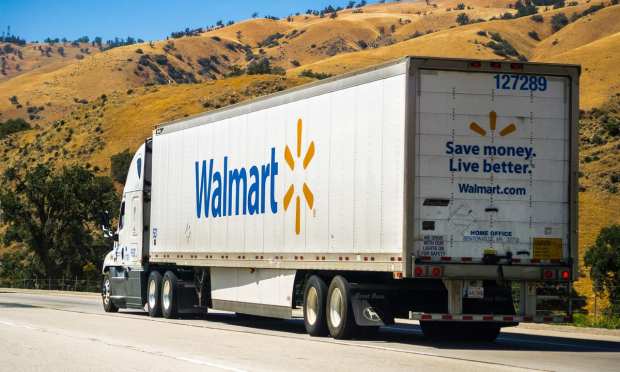Whole Paycheck: Walmart Adds To Last Mile Services With JoyRun Acquisition

In the middle of the biggest week in the biggest season, Walmart and Amazon are making news with their moves to solidify their shopping experience and last-mile delivery — because it’s hard to claim the whole paycheck for U.S. consumers if the goods can’t be delivered. Walmart, in particular is making last-minute adjustments on its last-mile capabilities.
The Bentonville crew recently announced that it is acquiring “select assets” of JoyRun, a company that bills itself as a peer-to-peer delivery service. According to the company, JoyRun connects consumers through a social feed that matches buyers with runners planning to make the runs to local eateries, coffee shops, hardware stores and more in the area. “Buyers can easily view, pay, and track their orders, and can chat with others about potential JoyRuns,” the company said in its 2017 funding release.
According to Walmart’s Srini Venkatesan, executive VP at Walmart Global Tech, the acquisition gives Walmart access to a network of 540 official merchant partners, and more than 30,000 people have served as drivers or “Runners” since the service launched in 2015.
Venkatesan said the acquisition allows Walmart to further augment ongoing efforts to explore even more ways to deliver for customers in the future. For instance, JoyRun runners could complement Walmart’s SPARK delivery program and other third-party delivery partners. He noted that it is in line with Walmart’s ability to consistently bring innovations to Walmart’s delivery service including autonomous vehicles, 3rd party services, associate delivery, InHome delivery and even drones.
“We anticipate the deal to close in the coming weeks and look forward to welcoming the JoyRun team to Walmart’s Supply Chain Technology team at that time,” he said in a blog post. “We continue to offer more ways to serve our customers through delivery and pickup, and this acquisition reflects our commitment to deliver how, when and where our customers need.”
AWS Outage
Amazon made the most news during Thanksgiving week by making a rare mistake. On Wednesday Nov. 25, an Amazon Web Services outage affected the digital presence and operations of dozens of companies. The service took out everything from entire websites to individual remote vacuum cleaners and was restored by early morning Thursday.
“We have restored all traffic to Kinesis Data Streams via all endpoints and it is now operating normally. We have also resolved the error rates invoking CloudWatch APIs,” reads an update on the AWS Service Health Dashboard. “We continue to work towards full recovery for IoT SiteWise and details of the service status is below. All other services are operating normally. We have identified the root cause of the Kinesis Data Streams event, and have completed immediate actions to prevent recurrence.”
The support page for Amazon Web Services’ status page said it was experiencing problems with Kinesis, its service that processes large streams of data, causing “increased error rates” for a number of websites. The outage also impacted its ability to post updates to the status page, so ascertaining the scope of the problem was difficult as of mid-afternoon.
According to the site DownDetector, the outage had spread to several high-profile sites including Vonage, Reddit, iTunes, GrubHub, Southern California Edison, Square, Chime, Fidelity, Roku, Alexa and Spotfiy. CNBC said other companies and services affected include Autodesk, Affirm, Target’s Shipt delivery service and the site operated by New York City’s Metropolitan Transportation Authority.
Kinesis, as described on the AWS site, is “a massively scalable and durable real-time data streaming service. KDS can continuously capture gigabytes of data per second from hundreds of thousands of sources such as website clickstreams, database event streams, financial transactions, social media feeds, IT logs, and location-tracking events. The data collected is available in milliseconds to enable real-time analytics use cases such as real-time dashboards, real-time anomaly detection, dynamic pricing, and more.”
